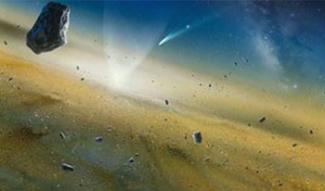Description
The formation of rotationally supported discs from magnetized dense cores of molecular clouds is a long-standing problem in star formation, due to the “catastrophic” magnetic braking that transports most angular momentum away from the circumstellar region and suppresses disc formation. Non-ideal MHD effects, especially ambipolar diffusion (AD) and Hall effect, have shown as robust mechanisms to resolve the magnetic braking catastrophe. However, the magnetic diffusivities that determine the efficiency of non-ideal MHD effects are highly sensitive to microphysics. We carry out non-ideal MHD simulations to explore the role of microphysics on disc formation and the interplay between AD and Hall effect during the protostellar collapse. We find that removing the smallest grain population (≤10 nm) from the standard MRN size distribution can greatly enhance the magnetic diffusivities and promote disc formation. In the infalling envelope, AD and Hall effect can operate either with or against each other, yet the combined effect of AD and Hall is to move the magnetic field radially outward relative to the infall matter. We also find that the direction of disc rotation can be bimodal for opposite magnetic polarities, when Hall effect is dominating the collapse process. In addition, microphysics and magnetic field polarity can leave profound imprints on observables including outflow morphology, disc to stellar mass ratio. With the help of AD and Hall effect, disc formation should be relatively common for typical prestellar core conditions, and cores with higher cosmic-ray ionization rate of a few 10^-16 /s can still form small discs of ≤10 AU radius.

